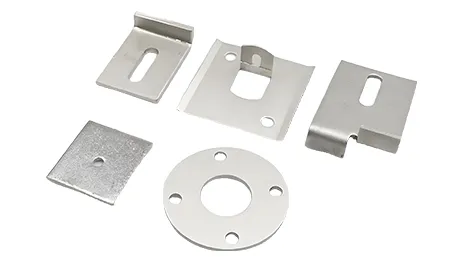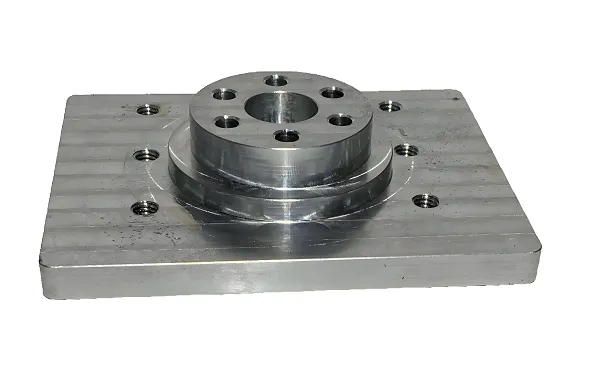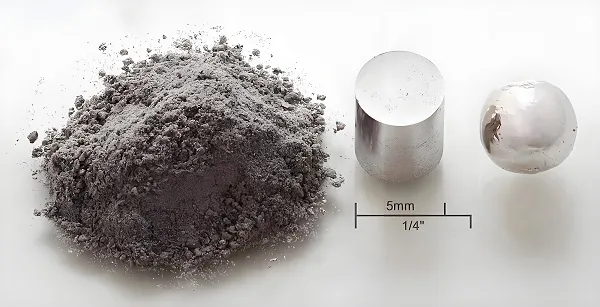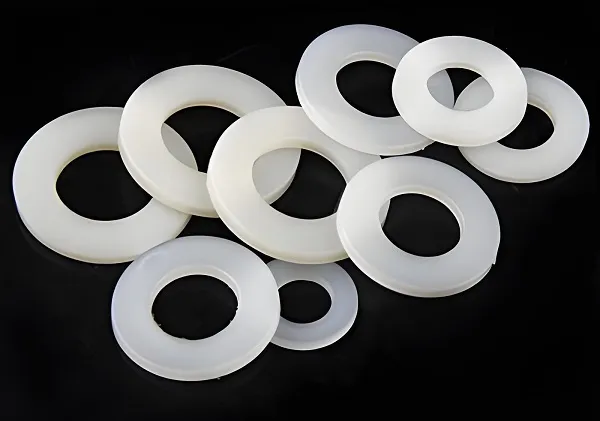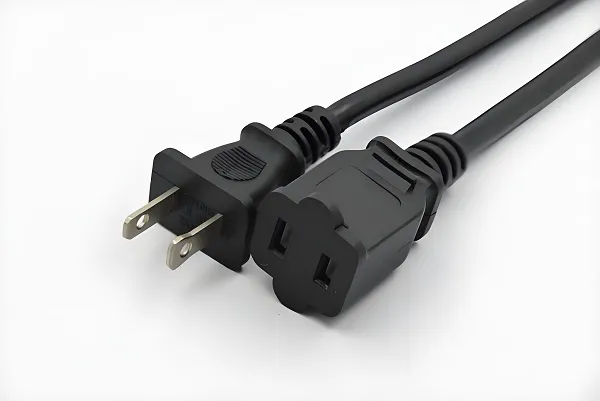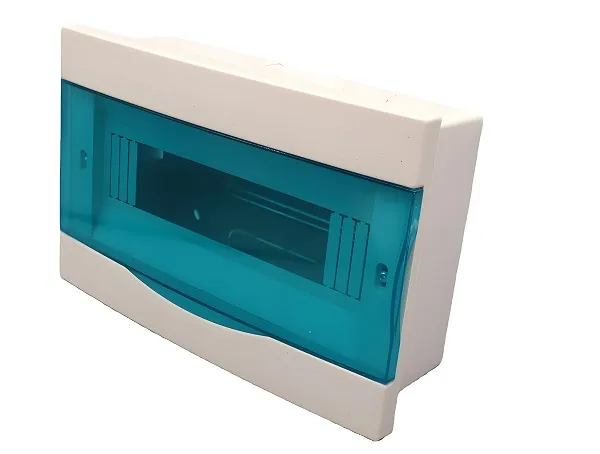Hexagon socket head cap screws, also known as hexagon bolts or flat cup screws, are fasteners with a hexagonal hole in the head. The head design allows for tightening and loosening with a hex wrench or hex socket, providing an efficient and secure fastening solution. Hexagon socket head cap screws are widely used in machinery design, manufacturing and maintenance due to their compactness, ease of handling and high tightening force.
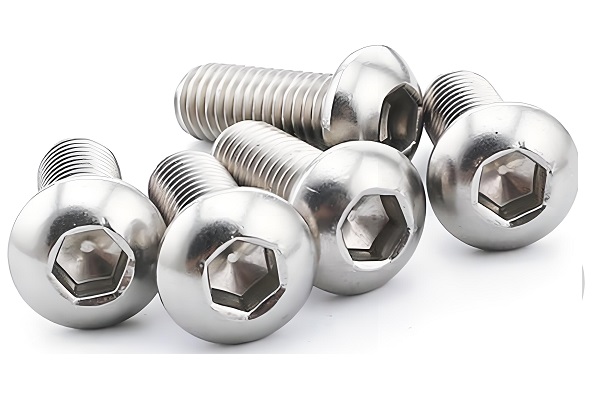
1. Hexagon socket head cap screws characteristics
Large tightening force: the hexagonal design makes the contact area between the screw and the tool larger, thus improving the efficiency of torque transfer during tightening, so that the screw can produce greater tightening force.
Easy to operate: Screws can be easily tightened and loosened with a hexagonal wrench or socket without worrying about the tool slipping off or damaging the head of the screw.
Good corrosion resistance: the surface of hexagon socket head cap screws is often zinc-plated, chrome-plated and other anti-corrosion treatment to improve its corrosion resistance and extend its service life.
High strength: Hexagon socket head cap screws are mostly made of high-quality steel, with high tensile strength and hardness, suitable for a variety of heavy loads and harsh environments.
2. Hexagon socket head cap screws production process
Hexagon socket head cap screws production process usually includes the following steps:
Material Preparation: Choose suitable steel (e.g. stainless steel, carbon steel, etc.) as raw material, and conduct chemical composition and physical property tests.
Cold heading: Extruding the steel into the initial shape of the screw, including the formation of the head and the hexagonal hole, by means of a cold heading machine.
Turning process: Use lathe to finish the screws, including thread cutting and head trimming to ensure dimensional accuracy and surface quality.
Heat treatment: quenching, tempering and other heat treatment processes are carried out as required to improve the hardness and strength of the screws.
Surface treatment: anti-corrosion treatment such as zinc plating and chrome plating is carried out to improve the corrosion resistance of the screws.
Inspection and packaging: quality inspection of finished screws, including size, appearance, performance and other aspects of the inspection, qualified packaging and warehousing.
3. Hexagon socket head cap screws processing technology
Hexagon socket head screw processing technology mainly includes cold heading molding, turning and heat treatment. Among them, cold heading forming is the key step to form the initial shape of the screw, through cold extrusion to make the steel plastic deformation without heating. Turning is used to finish the threads and head of the screw to ensure dimensional accuracy and surface quality. Heat treatment is to change the internal organization of steel to improve its mechanical properties and corrosion resistance.
4. Hexagon socket head cap screw surface treatment process
Hexagon socket head cap screws have a variety of surface treatment processes, common including zinc plating, chrome plating, Dacromet treatment and so on. The main purpose of these processes is to improve the corrosion resistance of the screw, to extend the service life. Zinc plating treatment to prevent corrosion through a layer of zinc plated on the surface of the screw; chrome plating treatment through electroplating or chemical plating on the surface of the screw to form a layer of chromium, with better hardness and wear resistance; Dacromet treatment is a new type of anticorrosive technology, by forming a layer of strong corrosion-resistant coating on the surface of the screw to improve corrosion resistance.
5. Hexagon socket head cap screws optional materials
Hexagon socket head cap screws are available in a wide range of materials, mainly including stainless steel, carbon steel, alloy steel and so on. Stainless steel screws have excellent corrosion resistance and good mechanical properties, suitable for wet, corrosive environments; carbon steel screws are lower cost, moderate strength, suitable for general mechanical connections; alloy steel screws through the addition of alloying elements to improve the strength and abrasion resistance, suitable for heavy loads and harsh environments.
6. Characteristics of hexagon socket head cap screws of different materials
| Material Type | Size Specification (Example) | Hardness (HBW) | Density (g/cm³) | Tensile Strength (MPa) |
| Stainless Steel | M3 to M64 | Varies by specific grade, e.g., 304 SS approximately 180 to 200 | 7.93 | Varies by specific grade, e.g., A2-70 approximately 480, A4-80 approximately 600 |
| Carbon Steel | M3 to M64 | Varies by specific grade and heat treatment, e.g., Grade 4.8 approximately 120 to 180 | 7.85 | Grade 4.8 approximately 400, Grade 8.8 approximately 800 |
| Alloy Steel | M3 to M64 | High, specifically dependent on alloy content, e.g., Grade 10.9 alloy steel significantly harder than regular carbon steel | Depends on alloy composition, typically between 7.5 and 8.5 | Grade 10.9 approximately 1000, Grade 12.9 even higher |
| Copper | M1.6 to M24 | Varies by specific grade, e.g., brass approximately 60 to 120 | 8.96 (for brass) | Depends on purity and alloy content, typically between 200 and 500 |
Customized CNC Hexagon Socket Head Cap Screws FAQ
1. How to customize CNC hexagon socket head cap screws?
A. Customized CNC Hexagon Socket Head Cap Screws need to be provided with detailed specifications, including size, material, surface treatment, quantity and so on. Work with a professional CNC machining manufacturer to design and produce according to the requirements.
2. How does CNC machining affect the quality of Hexagon Socket Head Cap Screws?
A: CNC machining can accurately control the size and shape of the screws and improve the machining accuracy and surface quality. At the same time, CNC machining can also realize the processing of complex shapes and structures to meet special needs. Therefore, CNC machining has an important impact on the quality of hexagon socket head cap screws.
3. How long does it take to customize CNC Hexagon Socket Head Cap Screws?
A: The time to customize CNC Hexagon Socket Head Cap Screws depends on a number of factors, including the complexity of the specifications, the production batch, and the availability of materials. Generally, the production lead time can be determined after specific communication with the manufacturer.
4. How is the price of Custom CNC Hexagon Socket Head Cap Screws determined?
A: The price of Customized CNC Hexagon Socket Head Cap Screws is affected by a number of factors, including material cost, processing difficulty, production batch, etc.. After detailed communication with the manufacturer, the price can be quoted according to the specific needs.

